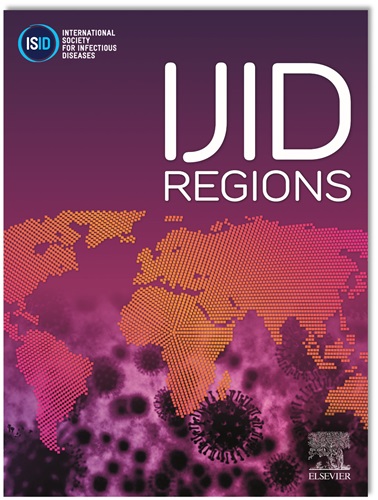COVID-19 increased existing gender mortality gaps in high-income more than middle-income countries
IF 4.8
2区 医学
Q1 INFECTIOUS DISEASES
引用次数: 0
Abstract
Objective
To analyze how patterns of excess mortality varied by sex and age groups across countries during the COVID-19 pandemic and their association with country income level.
Methods
We used World Health Organization excess mortality estimates by sex and age groups for 75 countries in 2020 and 62 countries in 2021, restricting the sample to estimates based on recorded all-cause mortality data. We examined patterns across countries using country-specific Poisson regressions with observations consisting of the number of excess deaths by groups defined by sex and age.
Findings
Men die at higher rates in nearly all places and at all ages beyond age 45. In 2020, the pandemic amplified this gender mortality gap for the world, but with variation across countries and by country income level. In high-income countries, rates of excess mortality were much higher for men than women. In contrast, in middle-income countries, the sex ratio of excess mortality was similar to the sex ratio of expected all-cause mortality. The exacerbation of the sex ratio of excess mortality observed in 2020 in high-income countries, however, declined in 2021.
Conclusion
The COVID-19 pandemic has killed men at much higher rates than women, as has been well documented, but these gender differences have varied by country income. These differences were the result of some combination of variation in gender patterns of infection rates and infection fatality rates across countries. The gender gap in mortality declined in high-income countries in 2021, likely as a result of the faster rollout of vaccination against COVID-19.
COVID-19 高收入国家的现有性别死亡率差距大于中等收入国家。
目的分析 COVID-19 大流行期间各国按性别和年龄组别划分的超额死亡率模式的变化情况及其与国家收入水平的关系:我们使用了世界卫生组织按性别和年龄组对 2020 年 75 个国家和 2021 年 62 个国家的超额死亡率估计值,并将样本限制为基于记录的全因死亡率数据的估计值。我们使用特定国家的泊松回归法研究了各国的模式,其观测数据包括按性别和年龄定义的各组超额死亡人数:几乎在所有地方,45 岁以上所有年龄段的男性死亡率都较高。2020 年,大流行病扩大了全球男女死亡率的差距,但各国之间以及各国收入水平之间存在差异。在高收入国家,男性死亡率远高于女性。相反,在中等收入国家,超额死亡率的性别比例与预期全因死亡率的性别比例相似。然而,2020 年在高收入国家观察到的超额死亡率性别比加剧现象在 2021 年有所缓解:结论:COVID-19 大流行造成的男性死亡率远高于女性,这一点已得到充分证实,但这些性别差异因国家收入而异。这些差异是由各国感染率和感染死亡率的性别模式差异共同造成的。2021 年,高收入国家在死亡率方面的性别差距有所缩小,这可能是由于 COVID-19 疫苗接种的推广速度加快了。
本文章由计算机程序翻译,如有差异,请以英文原文为准。
求助全文
约1分钟内获得全文
求助全文
来源期刊
CiteScore
18.90
自引率
2.40%
发文量
1020
审稿时长
30 days
期刊介绍:
International Journal of Infectious Diseases (IJID)
Publisher: International Society for Infectious Diseases
Publication Frequency: Monthly
Type: Peer-reviewed, Open Access
Scope:
Publishes original clinical and laboratory-based research.
Reports clinical trials, reviews, and some case reports.
Focuses on epidemiology, clinical diagnosis, treatment, and control of infectious diseases.
Emphasizes diseases common in under-resourced countries.

 求助内容:
求助内容: 应助结果提醒方式:
应助结果提醒方式:


